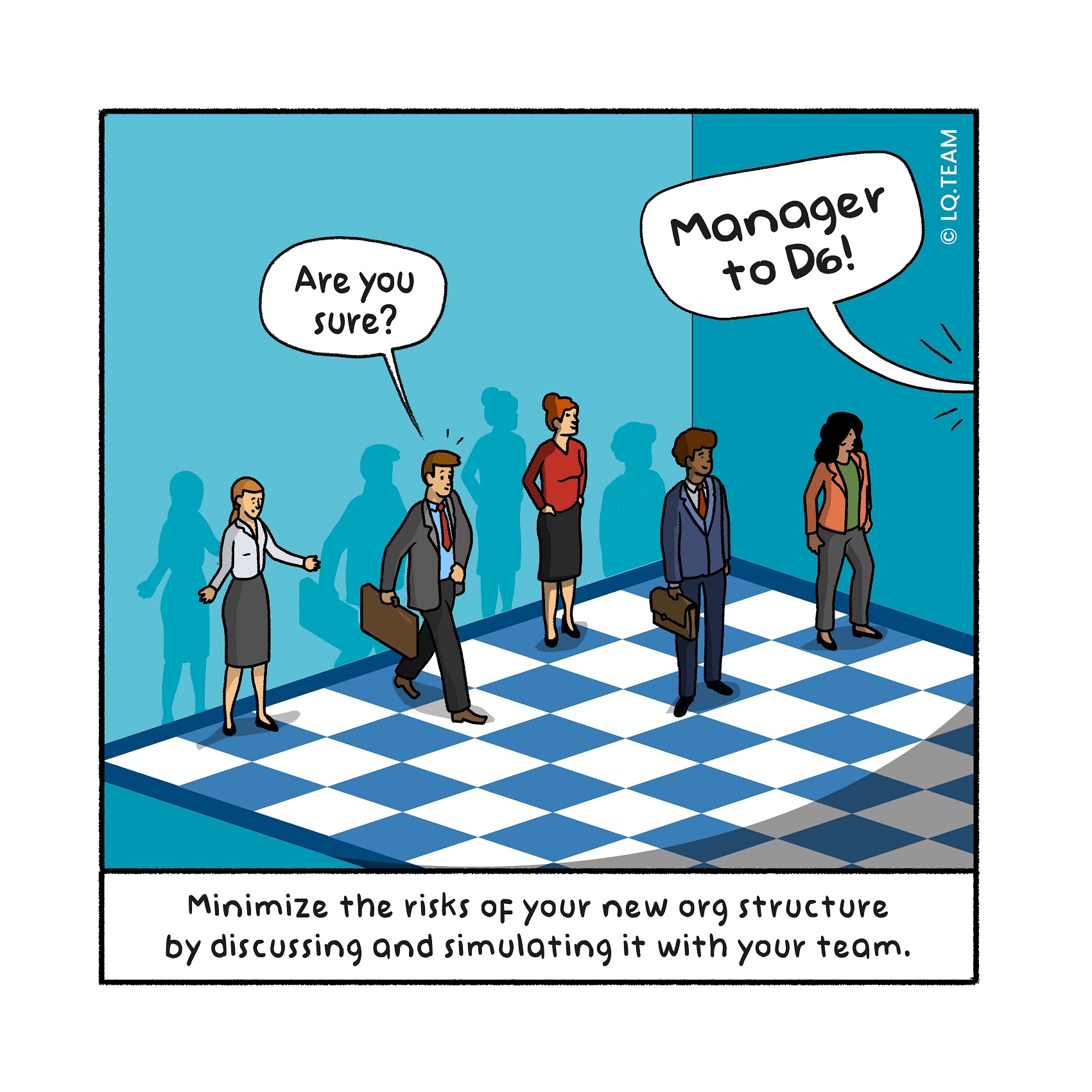
Nut to crack: How to reduce the risk upfront that the new organisational structure might not work?
In practice, dozens of examples are known of new organisational structures that have never been properly implemented and therefore do not deliver as intended. In the worst-case scenario, you will have many frustrated people after implementation, with higher costs and equal or decreased output, and talent will eventually run away. Before the actual implementation, it often be- comes apparent that the implementation might fail. If you pick up those sig- nals, how can you turn them around proactively to reduce the risk of failure?
Nutcracker: Live the future way of working
A new organisational structure on paper or a new written job description often only comes to life when you experience the new structure with the people who (will) occupy the roles. You do this by jointly answering questions such as:
- How will decision-making take place in the new structure?
- Who will you escalate to in case of disagreement?
- Who will make the plan? And who will sign it?
- How will you deal with deviations from the plan? Who will make the neces- sary adjustments?
- Who will be responsible for problem-solving? How would that work?
- How should meeting structures be re-shaped?
By discussing these situations out loud and exploring real examples with each other, differences and similarities working in the old versus new structures become visible, and people become familiar with how to act in the new struc- ture.
Risks become transparent, and agreements can be made about how to miti- gate them, which helps to contain them. Half-day or full-day workshops with the right people involved lend themselves well to these conversations – pro- vided they are well prepared. Next is an example of how you can design such a simulation on a large scale using gamification.
Real-life example: Simulation through gamification
During his career, Pim has frequently experienced that a change in the organisational structure intended to accelerate decisionmaking leads to delays and loss of productivity in practice – often due to poor implementation.
This time he is on the eve of implementing a new operating model with which the or ganisation aims to improve collaboration between the central and decentralised teams. Pim lets managers experiment with working in the new model to reduce the risk of failure. His head of Leadership and Talent advises him to use gamification because, this way, experimentation becomes scalable.
An external party replicates the customer and market situation of the organisation in game form, as well as the new operating model and the associated new organisational structure.
The simulation is loaded with reallife decisionmaking scenarios that managers en counter daily, where the tension between central and decentralised control becomes tangible. Then all managers are exposed to this experience. They are given the space to try, fail… and laugh.
It provides a new vocabulary that is being used for years to come, and it makes the ac tual implementation more lighthearted because managers feel comfortable discussing irregularities and can successfully bring the new operating model to life.
Now that the new operating model works, the simulation is used with a few minor adjust ments as a business introduction for new employees because it helps them understand the dynamics and working methods in the organisation within a short time.
Tip for change leader
Make it standard to evaluate, once a month or every two months after implementing a new organisational structure, whether the intended objectives have been achieved. This way, you can detect teething problems early and tackle them proactively.
Tip for change enabler
Make behaviour a topic of conversation in the discussions about organisational struc ture. Which behaviours help this new structure to work, and which hinder it? Document the agreements about behaviour formally.
Kernel: Bring to life
Simulating how an organisational structure will work in practice increases the chance of success. Gamification can help to simulate. If you are too far along in the process and the implemented organisational structure is already stum- bling, check out Challenge 32 for additional ideas to solve this.
